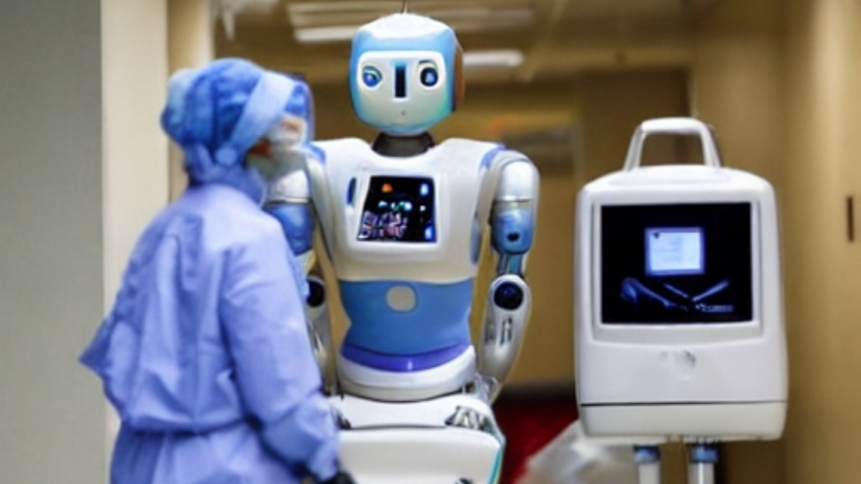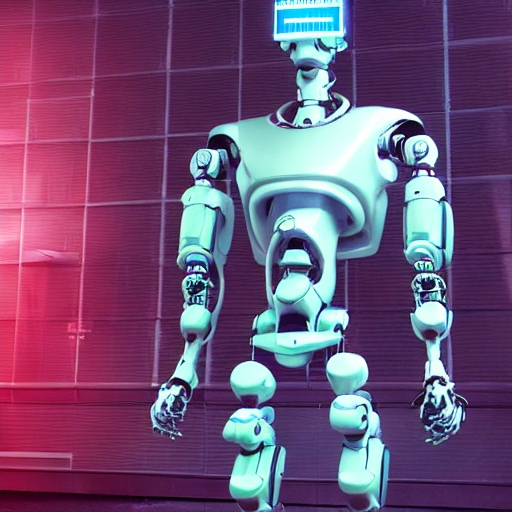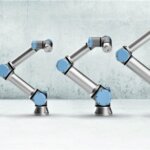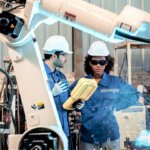Robot healthcare workers v1 could be porters in hospitals

|
Getting your Trinity Audio player ready...
|
- Robot healthcare workers take on manual roles.
- Greek projects advance the technology with prototypes.
- Staff retraining the key to avoiding redundancy.
The integration of robots into different industries is nothing new. As far back as the early 1960s, many manufacturing environments saw the first deployments of robotic arms, completing menial, repetitive tasks while simultaneously freeing up the human workforce to focus elsewhere. Ever since, there has been a growing concern that robots will eventually take over all human jobs, not just tedious labor roles.
Research into the integration of robots into daily life has taken another step forward recently, as Greek labs and startups are making advancements with what they’re terming “collaborative robots.” Latest research and prototypes show a shift from traditional static robots used in many industrial sectors worldwide for decades.
Robot healthcare workers: baby steps
First generations of robot healthcare workers will likely be referred to as “cobots,” collaborative robots that are designed to work alongside humans in a shared workspace. The main intention for cobots is to complement human abilities rather than replace human workers in their entirety.
This latest research undertaken by a team at the Center for Research and Technology Hellas (CERTH) aims to open up new avenues for the integration and automation of robotics in Greece. The core focus extends beyond research with a view to implementation.
According to Dimitris Giakoumis, a researcher with CERTH, the team is progressing with the implementation of two significant projects. One involves a European research project that began in November concerning the arrangement of products on store shelves in collaboration with store chains Lidl and Masoutis. The other, starting in January 2024, focuses on implementing autonomous driving and the use of robots in settings like factories and healthcare. The intention is to train robotic systems to operate autonomously.

Created by AI.
Researchers at CERTH have been focusing on robots in airports. Giakoumis highlighted difficulties associated with such tasks: “Training robots to handle more diverse objects is required. Baggage has a very wide variety, from heavy suitcases to backpacks. How the robot will grab them and how to reposition them needs work.”
The head of the Automation and Robotics Laboratory and professor at the Department of Electrical and Computer Engineering of the Aristotle University of Thessaloniki, Zoe Doulgeri, said: “A self-propelled two-armed robot will be developed, which will have sensors that will provide it with a sense of touch and vision.” For robot healthcare workers to be in contact with patients, the demands placed on hardware and software standards will be incredibly high.
The researchers are focusing on developing sensors to enable tactile perception and visual capabilities. Initially, they are aiming for the robot to identify barcodes on luggage or products, facilitating accurate placement. Understanding how the robot will pick up and move suitcases on a conveyor belt is also a key part of the study.

Droning on
The use of robotic porters and drones has been seen before. In 2015, South Glasgow University Hospital started using drones to transport equipment, linen, and food. The robots were placed at designated points, waiting for calls to literally fly into action.
But in every industry, a stigma remains over robots, with an ever-present fear of job displacement. Some argue the current age of AI is a parallel to the Industrial Revolution, where certain jobs vanished, but many were replaced by newer ones. Some jobs are likely to disappear, but more complex, specialized roles could emerge, the theory goes.
Amazon has introduced an initiative to retrain employees affected by AI takeover. Its aim is to retrain employees for technical roles, but the feasibility of such retraining continues to be debated.
Although the fear of mass job takeovers by AI and machine learning remains, human intervention in the development and maintenance of AI and robotics continues to be important. In fact, jobs related to the management, training, refinement of algorithms, and ethical deployment of AI systems are on the rise.
In call centers, increasingly staffed by silicon colleagues, there has been a rise in the number of human staff pursuing new career paths, training and maintaining their AI co-workers. This changing technological landscape requires adaptation via skill development and training, with robot workers, like CERTH’s set to play a continuing substantial role in worldwide industries.










